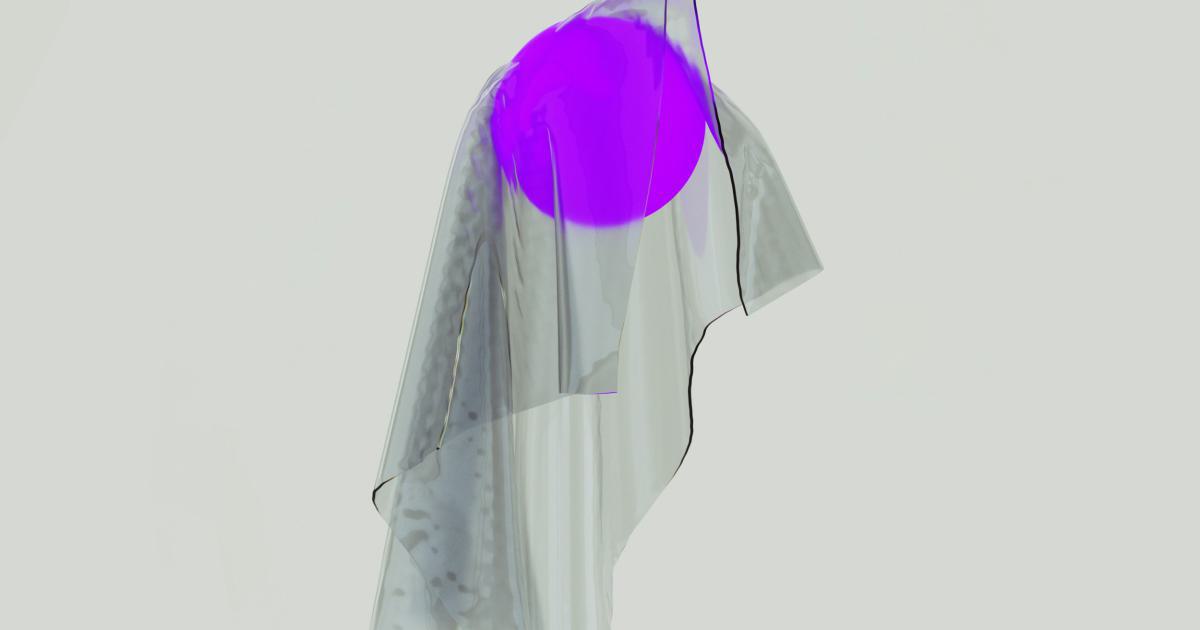Monochrome or Vibrant Palettes for Maximum Data Impact?


The Power of Color Choice in Data Visualization
Crafting effective data visualizations is a critical skill in today's data-driven world. As we navigate the ever-evolving landscape of information presentation, a fundamental question arises: Should we opt for monochrome or vibrant color palettes to achieve maximum impact? This article delves into the nuances of color theory, explores case studies, and provides practical guidance to help you make an informed decision.

Recognizing the Role of Color in Data Visualization
Color is a powerful tool in the arsenal of data visualization. It can be used to highlight key insights, establish visual hierarchies, and guide the viewer's attention. However, the choice between monochrome and vibrant palettes is not a simple one. Each approach has its own strengths and considerations that must be carefully weighed.
Monochrome Palettes: Clarity and Simplicity
Monochrome color schemes, characterized by the use of a single hue or shades of gray, offer a clean and uncluttered aesthetic. These palettes excel at emphasizing the inherent structure and relationships within the data, without the distraction of multiple colors. By focusing on the variations in tone and intensity, monochrome visualizations can effectively convey the relative magnitudes or trends within the data.
Vibrant Palettes: Emotional Impact and Engagement
On the other hand, vibrant color palettes, which utilize a diverse range of hues, can evoke a stronger emotional response from the viewer. These palettes have the potential to make data more engaging, memorable, and visually striking. When used strategically, vibrant colors can help differentiate data categories, highlight outliers, and make complex information more accessible.
Exploring the Psychological Impact of Color
Before delving deeper into the practical considerations of color choice, it's essential to understand the underlying psychological factors at play.
The Meaning of Colors
Each color carries its own set of associations and connotations, which can vary across cultures and contexts. For example, blue is often associated with calmness, trust, and professionalism, while red can evoke emotions of urgency, passion, or danger. Carefully selecting colors that align with the intended message or brand identity can significantly enhance the impact of your data visualizations.

Perceptual Factors
Beyond the symbolic meaning of colors, there are also perceptual factors to consider. Certain color combinations can create visual illusions, affect legibility, or even trigger physiological responses. For instance, high-contrast color pairings, such as black and white, can be more easily distinguished, while adjacent hues on the color wheel may appear to blend together.
"Color is a powerful communication tool and can be used to signal action, influence mood, and even effect physiological reactions." - Eva Heller, Psychologist and Author
Understanding these psychological and perceptual elements is crucial in crafting data visualizations that resonate with the target audience and effectively convey the intended message.
Monochrome Palettes: Mastering the Art of Simplicity
The allure of monochrome palettes lies in their ability to prioritize clarity and focus. By eliminating the distraction of multiple colors, these visualizations allow the inherent structure and patterns within the data to shine.
Enhancing Readability and Legibility
Monochrome color schemes excel at ensuring high contrast and legibility, which is particularly important when presenting complex or technical information. The use of varied shades, tones, and textures can help differentiate data elements without relying on color alone. This can be especially beneficial for viewers with color vision deficiencies or in situations where the display quality may be less than optimal.

Emphasizing Relative Differences
Monochrome palettes are well-suited for visualizations that aim to highlight the relative differences or magnitudes within the data. By utilizing a gradual scale of shades, the viewer can easily perceive the comparative relationships between data points, without being distracted by vibrant hues.
Minimalist Aesthetic and Professionalism
The clean, uncluttered appearance of monochrome visualizations often aligns with a more professional and authoritative tone. This aesthetic can be particularly effective in corporate or academic settings, where the focus should be on the data itself rather than the visual style.
Vibrant Palettes: Captivating the Audience
While monochrome palettes offer clarity and simplicity, vibrant color schemes can infuse data visualizations with a captivating and engaging appeal.
Enhancing Emotional Resonance
Carefully selected vibrant colors can evoke specific emotional responses from the viewer, helping to create a more impactful and memorable data presentation. For instance, the use of warm hues like reds and oranges can convey a sense of urgency or importance, while cooler blues and greens may be associated with calmness and stability.

Improving Data Differentiation
Vibrant color palettes excel at distinguishing between different data categories or elements within a visualization. By leveraging the inherent visual contrast of varied hues, viewers can more easily identify patterns, trends, and outliers in the data.
Enhancing Aesthetics and Engagement
Vibrant color schemes can elevate the overall aesthetic appeal of data visualizations, making them more visually stimulating and engaging for the audience. This can be particularly beneficial when presenting information to non-technical stakeholders or when aiming to capture the attention of a broader audience.
Navigating the Challenges of Color Choice
While the choice between monochrome and vibrant palettes may seem straightforward, there are several challenges and considerations that must be addressed to ensure the optimal impact of your data visualizations.
Balancing Aesthetics and Functionality
Finding the right balance between aesthetics and functionality is crucial. While vibrant colors may create a more visually appealing presentation, they must not come at the expense of clarity and legibility. Conversely, monochrome palettes can risk appearing dull or lacking in engagement if not executed with care.
Ensuring Accessibility and Inclusivity
Color choices can significantly impact the accessibility and inclusivity of data visualizations. Individuals with color vision deficiencies, such as color blindness, may struggle to interpret visualizations that rely heavily on color differentiation. Incorporating alternative visual cues, such as patterns or textures, can help ensure that your data is accessible to all viewers.

Maintaining Consistency and Branding
Regardless of the chosen color palette, it's essential to maintain consistency across your data visualizations, particularly when they are part of a broader communication strategy or brand identity. Inconsistent use of color can create confusion and undermine the coherence of your message.
Case Studies: Real-World Examples
To better understand the practical application of color choices, let's examine a few case studies.
Monochrome Case Study: The New York Times' "The Upshot"
The New York Times' data journalism section, "The Upshot," has consistently leveraged monochrome color schemes in its data visualizations. By using shades of gray, these visualizations effectively highlight the relative differences and trends within the data, without distracting the viewer with vibrant colors. The clean, minimalist aesthetic aligns well with the Times' brand identity and reinforces the authoritative nature of the content.

Vibrant Case Study: Spotify's Wrapped Campaign
Spotify's annual "Wrapped" campaign, which summarizes users' listening habits, stands out for its vibrant and engaging data visualizations. By incorporating a diverse palette of colors, Spotify's visualizations create a visually striking and emotionally resonant experience. The use of vivid hues, coupled with playful design elements, helps to make complex data more accessible and relatable for Spotify's target audience of music enthusiasts.

Practical Guidance for Effective Color Choices
Now that we've explored the nuances of monochrome and vibrant color palettes, let's dive into some practical guidance to help you make informed decisions for your data visualizations.
Understand Your Audience and Context
The first step in choosing a color palette is to deeply understand your target audience and the context in which your data visualization will be presented. Consider factors such as the industry, company culture, and the level of technical expertise of your viewers. This knowledge will help you determine whether a monochrome or vibrant approach will be more effective in communicating your message.
Prioritize Clarity and Accessibility
Regardless of the chosen palette, ensuring clarity and accessibility should be your top priority. Avoid color combinations that may compromise legibility or create visual challenges for viewers with color vision deficiencies. Incorporate alternative visual cues, such as patterns or textures, to support inclusive data interpretation.
Leverage Color Theory and Principles
Draw upon the principles of color theory to guide your palette selection. Understand the psychological and perceptual impact of different hues, and how they can be combined to create harmonious or contrasting effects. Experiment with various color schemes, and test them with representative users to validate their effectiveness.

Maintain Consistency and Alignment
Ensure that your color choices align with your brand identity and communication strategy. Establish a consistent visual language across your data visualizations, making it easier for viewers to recognize and interpret the information presented.
Iteratively Test and Refine
Don't be afraid to experiment and iterate on your color choices. Solicit feedback from your target audience, conduct usability tests, and continuously refine your approach to achieve the optimal balance between aesthetics and functionality.
Conclusion: Striking the Right Balance
In the realm of data visualization, the choice between monochrome and vibrant color palettes is not a simple one. Both approaches offer unique advantages and must be carefully considered in the context of your specific needs and audience.
Monochrome palettes excel at enhancing clarity, emphasizing relative differences, and projecting a professional, authoritative tone. Vibrant color schemes, on the other hand, can captivate the audience, improve data differentiation, and foster emotional resonance.
Ultimately, the most effective color strategy is one that strikes the right balance between aesthetics, functionality, and alignment with your communication goals. By understanding the psychological and perceptual factors at play, and leveraging practical guidance, you can create data visualizations that truly resonate with your audience and maximize the impact of your data.
Further Reading
- "The Non-Designer's Color Guide: Intuitive Color Theory for Artists" by Ellen Lupton
- "Envisioning Information" by Edward Tufte
- "The Visual Display of Quantitative Information" by Edward Tufte
- "Data Visualization: A Practical Introduction" by Kieran Healy
- "The Functional Art: An Introduction to Information Graphics and Visualization" by Alberto Cairo